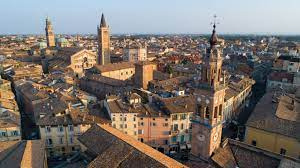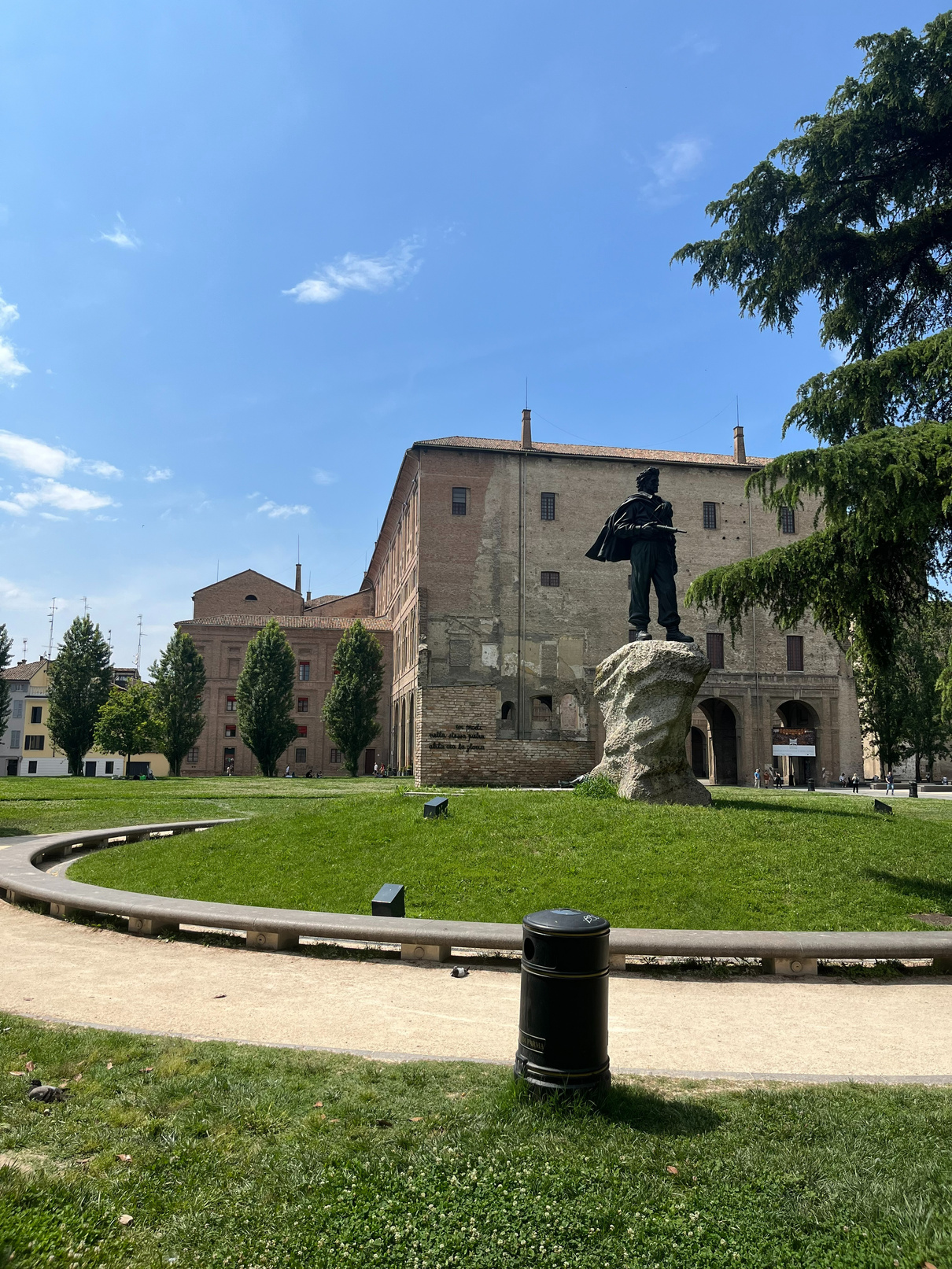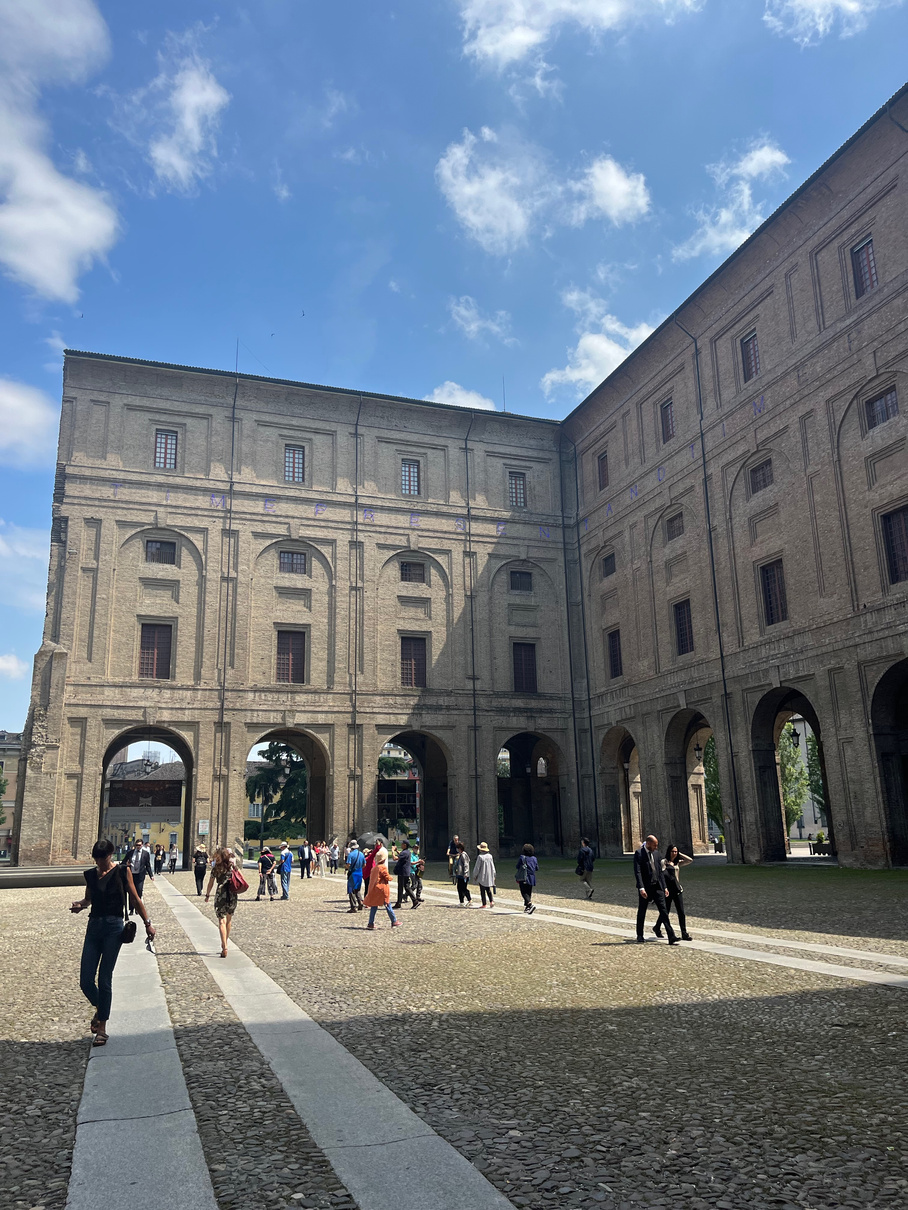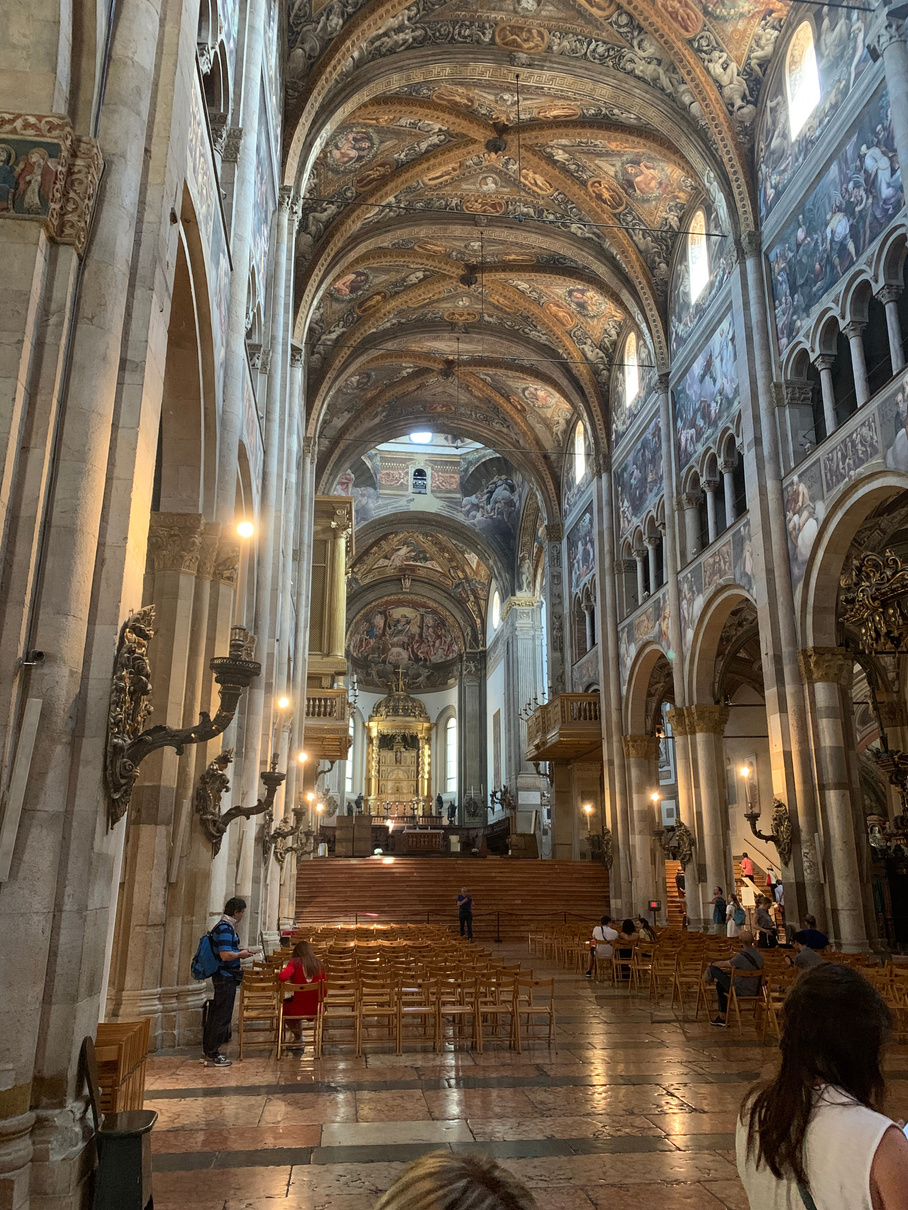
Parma and Travo

Monument to the Partisan
The Monument to the Partisan is a statue made to commemorate the Italian resistance soldiers who gave their lives in World War II to resist Benito Mussilini’s fascist regime. It is located in one of Parma’s central plazas, which was destroyed completely by bombing campaigns during the war, and remains empty as a reminder of the horrors of WWII. The two main sculptures featured in the monument are an armed partisan resistance fighter, standing proudly on a large stone base, and a captured and bound resistance fighter on the ground below. The first resistance fighter stands proudly to commemorate the eventual victory over the Nazis and Italian fascists, while the captured fighter represents the brave men and women who gave their lives to fight against those regimes. The stone sections of the monument are made from stones sourced from the mountains in which partisan resistance fighters hid from the Nazi and Italian fascist regimes.

Palazzo Della Pilotta
The Palazzo is located in the city center of Parma. The name of the palazzo comes from an old Spanish game called pelota. It was built by the Farnese family. It was designed by the architect Francesco Paciotto. It took over thirty years to complete, and building began in 1580. Since its construction, it has taken many different layouts, mostly due to destruction. It was partially destroyed by an air raid in 1944 during WWII. It has a large theater and used to have stables for horses. Today, the theater remains, and the building has multiple museums to visit. Uses include: headquarters of the National Archaeology Museum, the Palatina library, and the galleria nazionale. There is a courtyard and park with many historical sculptures about the history of Parma. Directly next to the palazzo is the monument of Giuseppe Verdi, who was one of Italy's most famoud composers and politicians.

Parco Archeologico Villaggio Neolitico di Travo
The archaeological park and village, located in Travo Italy, opened in 1997. The site contains an ancient settlement from pre-historic times. On the site, there are houses and structures, that have been dug up and reconstructed. The houses are made of local materials such as wood, reeds, and plaster. The village is located right next to a river which provided the people with critical resources such as water, materials, and food. The site gives us an example of what life could have been like. Living arrangements included one big house with multiple beds on the floor. Across the land, they had different structures used for different reasons. Archaeologists have found holes in the ground where they believe food was stored. The techniques, animals, and arrangements the pre-historic village used are shown in the site.
The archaeologists today believe the tribe who lived there were not hunters, but agricultural. They kept a few animals on the land, used for resources, and food during important celebrations.

Cathedral of Santa Maria Assunta
The Cathedral of Santa Maria Assunta is an incredibly beautiful, old, and important cathedral located near the center of Parma, Italy. The original structure of the cathedral is older than the year 890, but the structure was mostly destroyed in a fire around the year 1056. Reconstruction began soon after and was mostly finished by the year 1074. The cathedral was consecrated in 1106, by Pope Paschal II, and in 1178 the large gabled façade was completed. Around this same time, Benedetto Antelami revised the building and the three naves. The bell tower of the cathedral was rebuilt by Obizzo Sanvitale around 1288. The inside of the cathedral contains many incredible artworks from numerous different artists. The artwork of arguably the most importance must be the huge murals that encompass the high walls of the cathedral, depicting several important biblical scenes from the life of Jesus Christ.